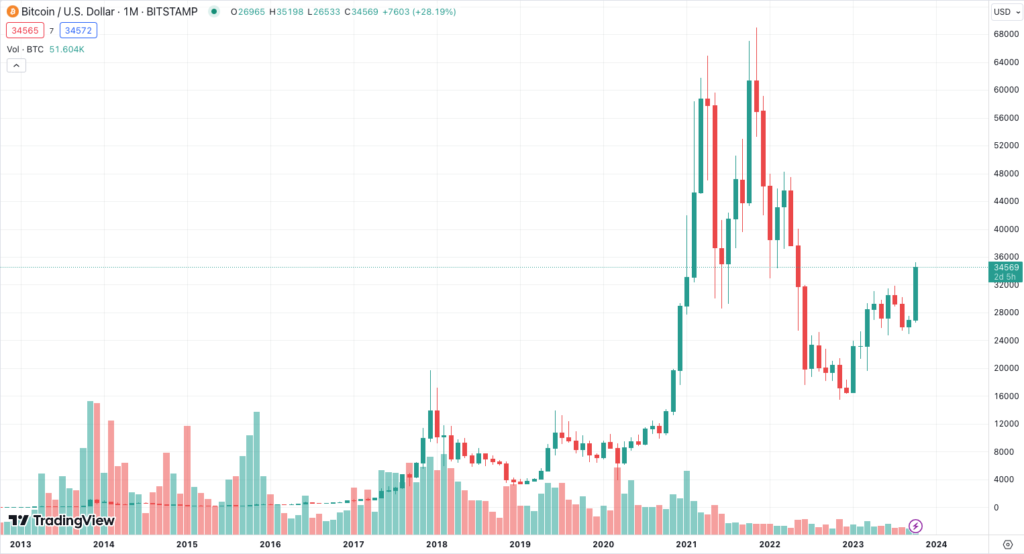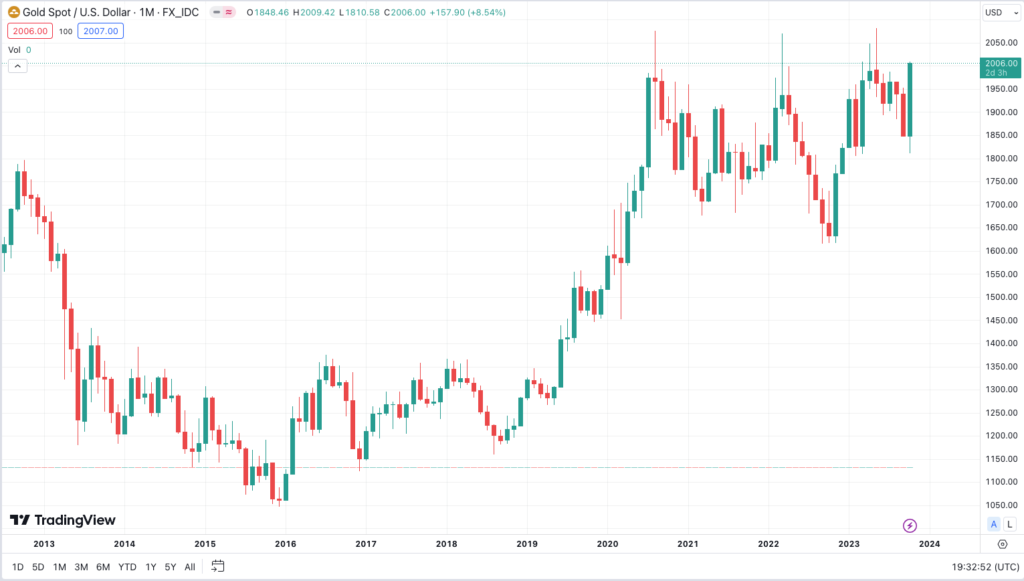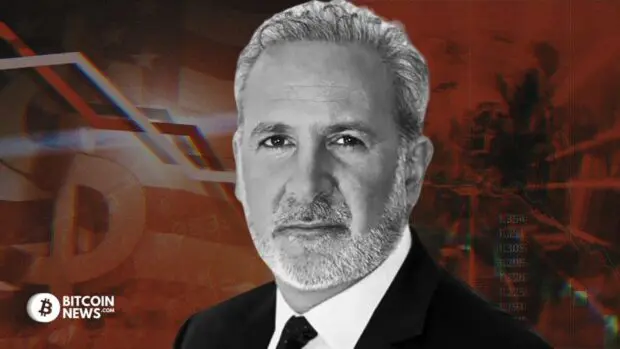Peter Schiff, Chief Economist at Euro Pacific Capital, has consistently cautioned that a crash in the U.S. Treasurys market could lead to a US dollar collapse and undermine the American standard of living.
Schiff on US Dollar Collapse
Peter Schiff’s warning is particularly timely as the 10-year Treasury yield surged past 5% in October 2023, a level not seen since 2007.
Schiff argues that the Federal Reserve’s ability and willingness to generate digital dollars out of thin air pose significant dangers to the broader economy.
In a recent social media statement, Schiff emphasized, “We are getting very close to a crash in Treasuries. That means the party will finally come to an end.” He further explained that a precipitous decline in the dollar would have devastating implications for the economy and American living standards.
The Allure of Bitcoin Amid Economic Uncertainty
It’s noteworthy that influential figures such as Schiff can aptly pinpoint the vulnerabilities of the U.S. dollar, yet dismiss Bitcoin’s value as a significant financial safeguard.
While Schiff champions the merits of gold, the tangible nature of this precious metal complicates secure digital transactions and verification. On the flip side, Bitcoin’s decentralized architecture and finite supply act as robust bulwarks against inflation and currency depreciation, particularly for those who invest the effort to comprehend its intricacies.
Related reading: How Bitcoin Protects Against Inflation And Currency Devaluation


Although gold has an esteemed place in monetary history, it pales in comparison to Bitcoin when it comes to verifiability, scarcity, and escalating practical applications.
Related reading: Bitcoin Is the Rediscovery of Money
What advocates of hard money can concur on, is the stark contrast both asset classes offer compared to the Federal Reserve’s unfettered capacity to manufacture dollars. As public trust in traditional financial systems erodes, the allure of Bitcoin as a digital bastion against economic instability grows ever more compelling for those willing to delve into its attributes as a reliable form of digital-age money.

Resonances with the 1987 and 2008 Financial Turmoil
The present climate draws eerie parallels with 1987—a year that witnessed 10-year Treasury yields skyrocket past the 10% mark, culminating in the infamous Black Monday crash. While today’s yields are considerably more modest, the trajectory raises red flags for those alert to looming economic downturns.
Schiff succinctly captures the sentiment, stating, “To grasp how we stand on the precipice of a monumental financial and economic crisis, while mainstream financial media and Wall Street elites remain blissfully unaware, one need only revisit the media discourse and projections from the summer of 2008.”
Related reading: Jamie Dimon Expects “Nothing Like 2008” Recession And Banking Crisis
This summer saw credit rating agencies demote U.S. sovereign debt in the wake of the debt ceiling crisis. Such a decision intensifies the existing doubts surrounding Treasurys, which have historically been perceived as some of the world’s safest assets.
With declining confidence, higher yields are being offered to attract cautious investors. Many Wall Street experts recognize this pattern as a debt spiral.
Bitcoin as a Potential Solution in Uncertain Times
In a climate of economic unpredictability, the autonomy Bitcoin offers from established systems is becoming increasingly appealing.
While risks are pervasive in all markets, diversification into a finite digital currency may offer a serious degree of security against fiat failing. Although Bitcoin’s value may fluctuate in fiat terms, its robust performance is notable, particularly as it weathers the challenges of looming global financial uncertainties.
Related reading:










